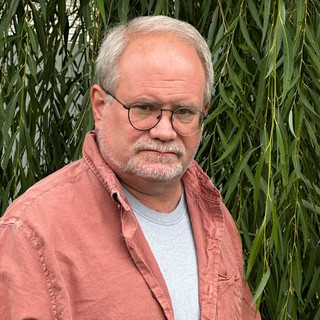For most of the world, Easter has come and gone, so this story is a trifle dated. But during the Easter Vigil services at the Cathedral Church of St. Paul in Boston, a female priest had a bit of a memory lapse when it came time for Communion. In response, Bishop Alan M. Gates reached out and removed the priest's collar. You can view the exchange below.
Episcopal Bishop Alan M. Gates rips female "reverend's" collar off as she spoke at an LGBT-friendly ceremony MC'd by a drag queen.
— MAGA PATRIOT NEWS (@MAGAPATRIOTNEWS) April 25, 2024
He has now been branded a misogynist and forced into a groveling apology.
🤡🤡🤡 World pic.twitter.com/bWqrLfd63d
The joke here, such as it is, is that the bishop, as this priest's superior, was "revoking" the trappings of her office because she forgot the words to be said during communion. Ha, ha, very funny. As you can see from the video, most of the people in attendance thought the whole incident was humorous.
Of course, it did not take long for the reactions to erupt. Soon, people were decrying Bishop Gates' stunt as an example of misogyny. The Boston Globe reported:
“It was just really sad that an occasion that is supposed to be joyous had to be marked by the specter of long-term misogyny that is pretty essential to Christianity, even in a church that feels like it has advanced past that,” said the Rev. Rita Powell, chaplain for the Harvard Episcopal Community, who attended the service and witnessed the incident.
Of course, Gates immediately began to beg for forgiveness:
It was a devastating and demeaning act, which I regret with all my heart. It was not and would never be my intent to humiliate Rev. Tamra; however, that was precisely the impact of my action ... I misused my authority, failed to extend episcopal grace, and transgressed personal space and boundaries.
Was the act stupid? Yes. Was it irreverent? Yes. Did it belong in a service? No. Was it devastating? Only to the people who habitually find everything devastating.
Can anyone say that they are surprised? This was a service reportedly MC'd by a drag queen. If one decides to bring worship down to the street level and rob it of all meaning, one can hardly expect the clergy, let alone the laity, to take worship or for that matter their faith seriously. The desecration in question is not just that the church sexually charged the Easter Vigil with a drag queen. It includes reducing the act of worship to nothing more significant than a whoopee cushion.
Whatever your position is on liturgical worship, it has a purpose. In the series "The Power of Myth," Bill Moyers and Joseph Campbell discuss the ramifications of removing not just sacred stories but also rituals from society. The result can be a raft of societal problems, including crime.
JOSEPH CAMPBELL: ...There’s been a reduction, a reduction, a reduction of ritual. Even in the Roman Catholic Church, my God, they’ve translated the Mass out of the ritual language into a language that has a lot of domestic associations. So that, I mean, every time now that I read tile Latin of the Mass, I get that pitch again that it’s supposed to give, a language that throws you out of the field of your domesticity, you know. The altar is turned so that the priest, his back is to you, and with him, you address yourself outward like that. Now they’ve turned the altar around, looks like Julia Child giving a demonstration, and it’s all homey and cozy.
BILL MOYERS: And they play a guitar.
JOSEPH CAMPBELL: They play a guitar. Listen, they’ve forgotten what the function of a ritual is, is to pitch you out, not to wrap you back in where you have been all the time.
Ritual has a purpose. In some societies, children used to undergo a ritual sometime during puberty that was meant as a tangible expression that they were no longer children but adults. They were then expected to understand that the time had come to "put away childish things" and assume the rights and responsibilities of adulthood.
Likewise, liturgical worship is meant to remind you that you are not at the corner bar knocking back a few cold ones. You are not kicking back on the couch playing "Call of Duty." You are talking to God.
In one sense, the purpose of a liturgy is not to make one holy. It is to inform the worshippers that while they are not holy, they have still been given the chance to approach a holy God. Since Moses encountered the Burning Bush, entering a sacred space meant that one did not do or say the same things or think the same thoughts as one does in everyday life.
If liturgy is not your style, that's fine, but its purpose is to take you to a holy place and to help you adopt a sacred frame of mind. It is supposed to be different from the everyday and mundane. It is meant to be transformative by nature. It applies to everyone: gay, straight, trans, or whatever. The Episcopal Church is liturgical, so the rules of liturgy apply.
As a former Episcopalian, I can tell you from experience that the church has long had a fetish for dragging the sacred through the gutter under the auspices of making the church more palatable to people who might not otherwise attend. The practice also allows its proponents to make sure that everyone knows how progressive and intelligent they are and that they are somehow set apart from the knuckle-dragging traditionalists. It is an act of pride (pun intended).
If the Episcopal Church is so keen on deconstructing everything, it should not be surprised that its people no longer take it seriously, including its bishops.










Join the conversation as a VIP Member